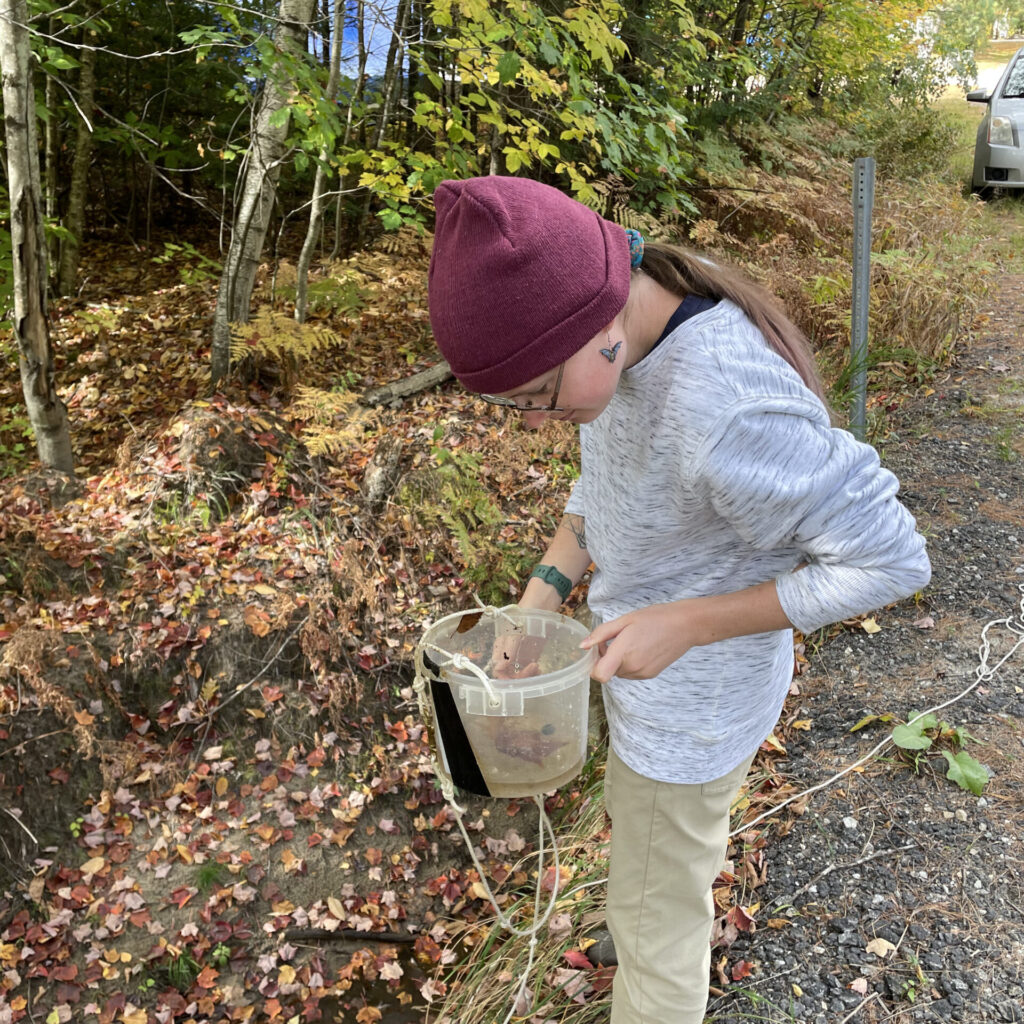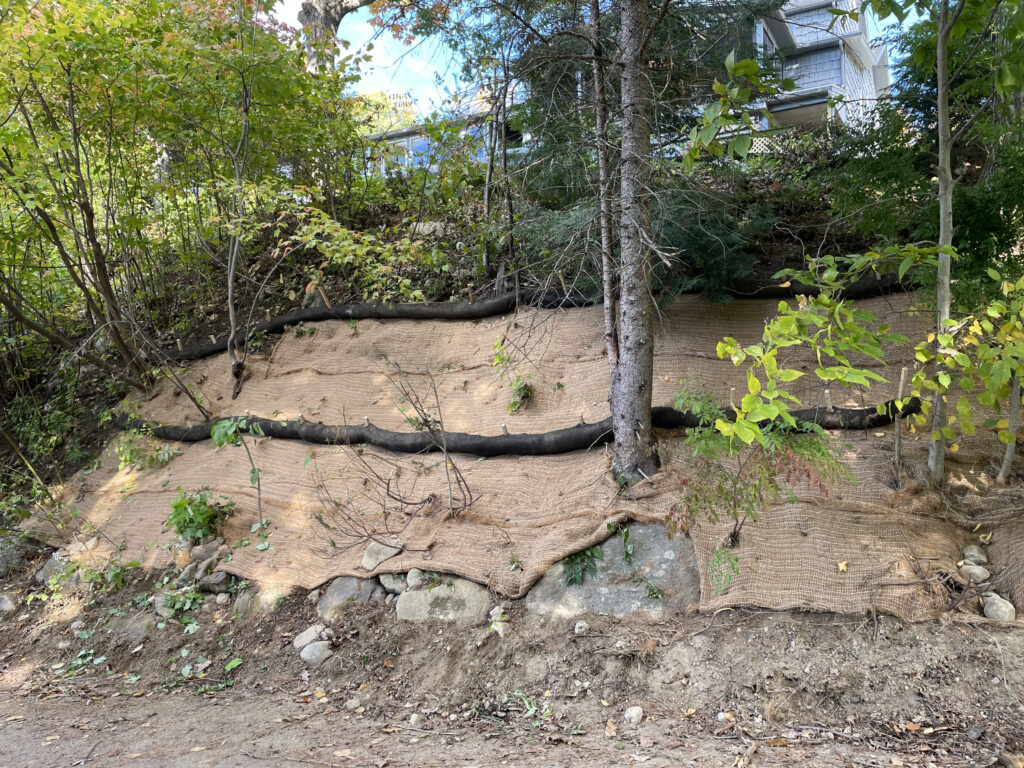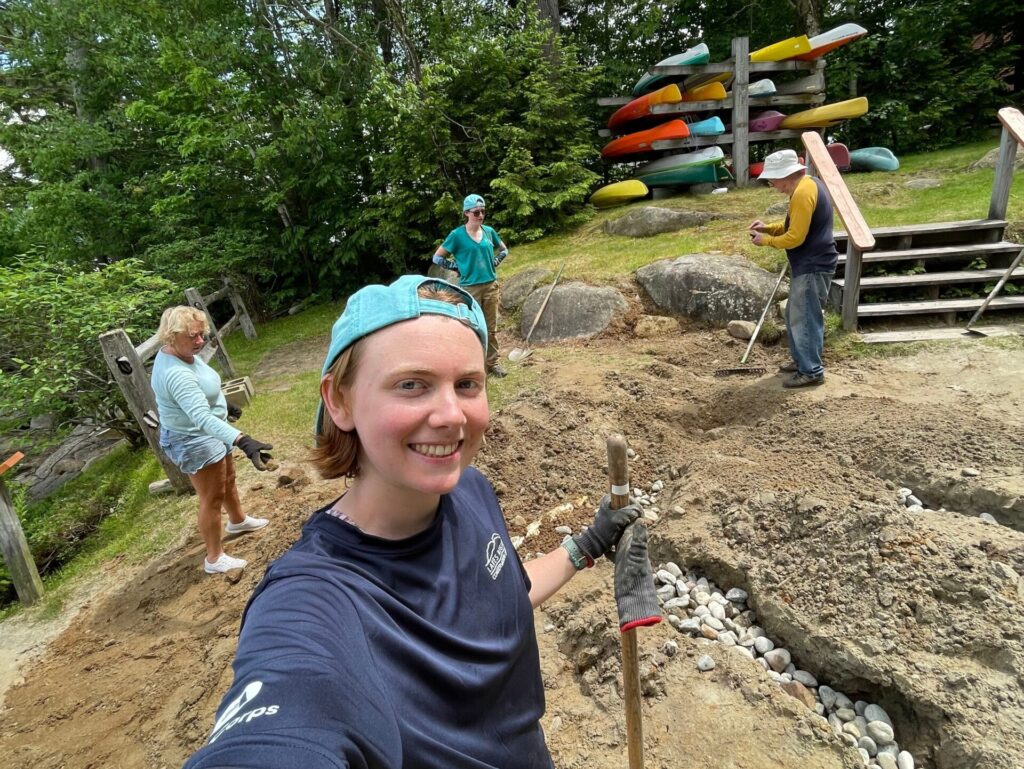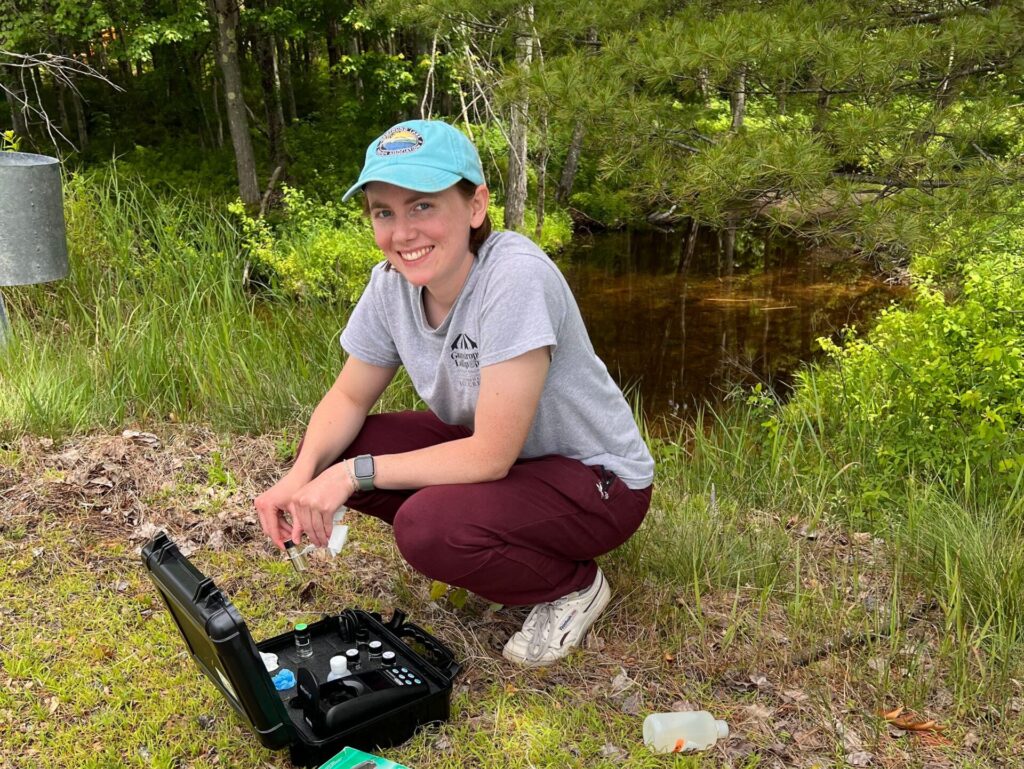After I shook the Vassar president’s hand and crossed the stage, I was thrown out of the bubble I’d lived in for four years into the terrifying “real world”. A mere two days later, I turned up at a meet-and-greet luncheon with the Newfound Lake Region Association staff— It turned out to be a pretty cushy landing. I called my mom the next day and couldn’t stop smiling as I told her it would be an amazing summer. Five months later, I stand by my initial claim. As an Americorps Watershed Steward, I’ve had enough unique experiences to fill up an entire resume—and a pretty entertaining storybook.
There are three main focuses for the watershed steward position: water quality monitoring, stormwater pollution management, and education and outreach. One of our water quality tasks was to go tributary monitoring every month. The NLRA tests 35 sites around the watershed for turbidity and phosphorus, and uses a YSI probe to collect temperature, dissolved oxygen, and specific conductivity. These values indicate water quality in the streams and rivers surrounding the lake. Current and historical measurements can tell us which locations may be contributing the most pollution to the lake, and we can then use this information to address problem areas. My favorite part of tributary monitoring was using our very official “bucket on a string” to take water samples from streams we could only access off the road. It took a very particular technique to fill up the bucket: to gain enough momentum and get it swinging correctly, you had to throw the bucket down with just enough string so it wouldn’t hit the water. However, I am not an expert at bucket sampling, so it ended up with a giant crack. I managed to cover it using the random roll of Duct tape sitting in my trunk. We carried on with a sad but functional “bucket on a string” for the rest of the term.

A lot of the summer was spent on stormwater projects. The NLRA collaborates with property owners who report erosion issues, then formulates plans to slow the flow of stormwater. This benefits the property and the water quality of the lake, since reducing stormwater runoff limits pollution. Most of the stormwater projects I did involved shoveling rocks, chucking rocks, arranging rocks (“rock-work”, as it is known), digging trenches, raking, and other simple but strenuous tasks. We ended up with an impressive final arrangement of rocks that we could tell would effectively slow stormwater. One of my favorite projects, however, didn’t involve any rocks. We installed a coconut fiber mat on a roadside slope at Red Fox Village in an effort to hold the highly erodible soil in place long enough for plants to establish. We couldn’t just roll out the mat—we had to cut out holes for the preexisting plants using my trusty army knife I got in Australia. The craziest part was staking in the sediment sock, another item used to slow water. Once we got the first one staked, we then balanced on those stakes to install the next row. My right shoulder got a workout as I hammered in the stakes at the most awkward angle while simultaneously trying not to slip off. I was impressed with the final product, especially as someone who had never even heard of a coconut mat as a means of preventing erosion. I’m hopeful that now the baby dogwood trees will be able to spread their roots enough to keep the hillside intact and protect Newfound’s waterways from pollution.

One of my favorite and most heartwarming moments happened while I was leading a group of girls from Camp Wicosuta on a hike in the Hebron Town Forest. The NLRA partners with several camps around the lake to lead nature activities, and the Wicosuta girls get to decide if they want to spend their choice block with us. This gives the opportunity for city kids who haven’t spent much time in nature to get outdoors, and for kids who grew up outside to solidify their love for nature. I was nervous to lead the group by myself at first, but I knew I was prepared after previewing the hike and helping Mirka with other groups of kids. Though the girls’ energy levels were through the roof, I found it wasn’t too difficult to manage the chaos with loads of nature facts. When we got to the top of the mountain, one of the girls asked why the trail was covered in fog. Not mentally prepared to explain the entire water cycle, I told her it was like we were walking through a cloud. She looked up at me like I’d said she gets to eat chocolate cake for three meals a day. She asked, “Are we really walking through a cloud?” and repeated that at least twice. I’ll never forget her enthusiasm. It reminded me that getting kids to appreciate nature is crucial for saving the planet, and I want to inspire many more children in the future.
Every day with the NLRA, I know I am positively influencing many people and protecting the environment. This may have been the best summer of my life, or at least the most impactful one. I’m absolutely more prepared for the “real world” after my diverse Americorps experience.


